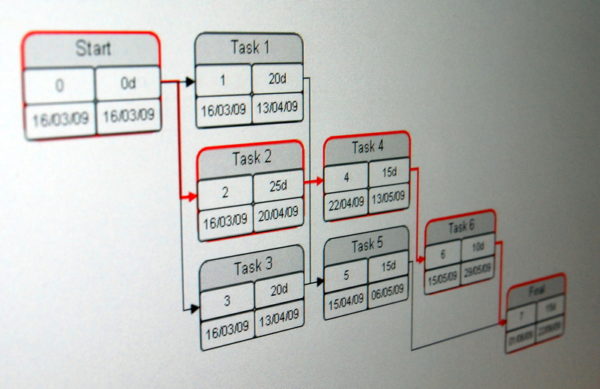A Work Breakdown Structure (WBS) divides a project into smaller, manageable pieces. It helps organize the work required.
A PERT chart works in concert with a WBS to organize and schedule required tasks. PERT stands for Program Evaluation Review Technique.
Nathan Garrett, a professor at Woodbury University in Burbank, California, uses a simple example to introduce Work Breakdown Structure, PERT Chart, Limited Resources, Critical Path, and Slack.
The WBS starts with a table of tasks, their duration, and what tasks must precede others.
Next, to construct the PERT Chart, graphically list which tasks come first and then link those to the next tasks via arrows until the project end.
Once the PERT Chart is completed, we can determine the Critical Path. The Critical Path identifies what tasks must be completed on schedule so that the project will not miss its end date.
It also allows for Slack to be quantified, if it exists. Slack is the amount of time a task can be delayed without delaying the project.
Finally, Professor Garrett gives an example of how to treat limited resources.
You can view Professor Garrett’s video here.








Leave A Comment